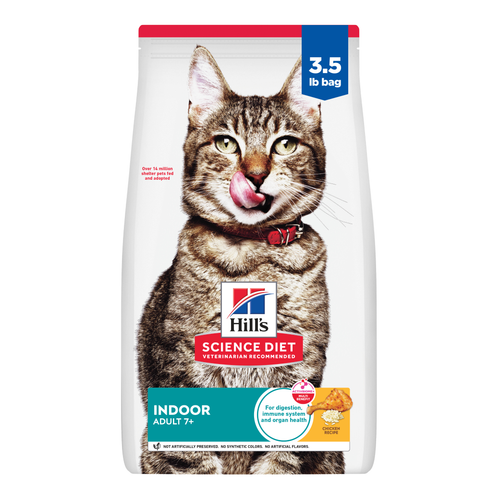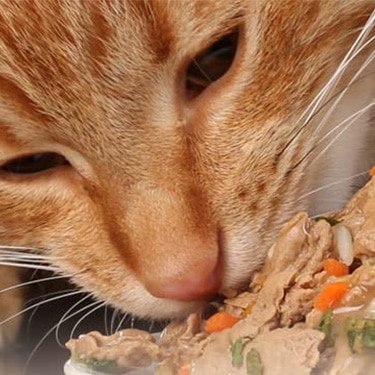
-
Find the right food for your petTake this quiz to see which food may be the best for your furry friend.Find the right food for your petTake this quiz to see which food may be the best for your furry friend.Featured products
 Hill's Science Diet Adult Chicken & Beef Entrée Dog Food
Hill's Science Diet Adult Chicken & Beef Entrée Dog FoodChicken & Beef Entrée in a delicious loaf with complete & balanced nutrition to help keep adult dogs active and healthy
Shop Now Adult Chicken & Barley Recipe Dog Food
Adult Chicken & Barley Recipe Dog FoodSupports lean muscle and beautiful coat for adult dogs
Shop Now Adult Large Breed Chicken & Barley Recipe Dog Food
Adult Large Breed Chicken & Barley Recipe Dog FoodSupports healthy joints, lean muscle, and beautiful coat for large breed dogs
Shop NowFeatured products Senior Vitality Adult 7+ Tuna & Vegetables Stew
Senior Vitality Adult 7+ Tuna & Vegetables StewImproves Everyday Ability to Get Up & Go
Shop Now Adult 7+ Indoor Chicken Recipe Cat Food
Adult 7+ Indoor Chicken Recipe Cat FoodSupports energy level and beautiful fur in mature indoor cats
Shop Now Adult Turkey & Liver Entrée Cat Food
Adult Turkey & Liver Entrée Cat FoodPrecisely balanced nutrition with the delicious taste of minced turkey & liver to help fuel the energy needs of cats during the prime of their life
Shop Now -
Dog
- Dog Tips & Articles
-
Health Category
- Weight
- Food & Environmental Sensitivities
- Urinary
- Digestive
- Joint
- Kidney
-
Life Stage
- Puppy Nutrition
- Adult Nutrition
- Senior Nutrition
Cat- Cat Tips & Articles
-
Health Category
- Weight
- Skin & Food Sensitivities
- Urinary
- Digestive
- Kidney
-
Life Stage
- Kitten Nutrition
- Adult Nutrition
Featured articles What Is Littermate Syndrome? Pet Adoption Guide
What Is Littermate Syndrome? Pet Adoption GuideLearn more about littermate syndrome in dogs and cats and how to successfully navigate adoption and early socialization processes.
Read More The Science Behind Our Love for Pets
The Science Behind Our Love for PetsLearn the scientific reasons why we have such strong connections with our pets, and what science says about the love between humans and our furry friends.
Read More How to Properly Mix Wet & Dry Pet Foods
How to Properly Mix Wet & Dry Pet FoodsAn Orange cat eating from a bowl filled with mixed food
Read More -


Old dog syndrome might just sound like what happens when your dog turns gray and begins to lose his youthful vigor, but it actually refers to a particular condition that can happen to dogs at any stage of life. Keep reading to learn about this condition, actually named vestibular disease, in dogs and what signs to watch for in case this condition ever affects your beloved pup.
What Is Vestibular Disease?

"Old dog vestibular syndrome" is the name commonly given to the balance disorder called canine idiopathic vestibular disease, says the Vestibular Disorders Association. While this condition is commonly seen in senior dogs, it can happen in dogs of all ages, cats, humans and any other species with a complex inner ear system. The vestibular system is the part of the inner ear that controls balance, as shown in a diagram from Merck Veterinary Manual. A disturbance in this organ can cause dogs to experience dizziness and have difficulty walking in a straight line. Wag! offers some signs to help you recognize the start of old dog syndrome:
- Pronounced head tilt
- Stumbling or staggering
- Standing with an unusually wide stance
- Unwillingness to eat or drink
- Lack of coordination
- Falling over
- Continuous circling in a single direction
- Nausea and vomiting
- Rapid eye movement while awake
- Choosing to sleep on the floor or other hard surfaces.
It's important to note that these could also be symptoms of a more serious condition, such as a stroke or a tumor in the brain. For this reason, you should report any sudden balance problems to your veterinarian as soon as possible.
How Vestibular Disease in Dogs Develops
Vestibular disease can come about in a variety of ways. The term idiopathic means that there is no known cause for why it occurs, which is most often the case. However, sometimes this condition can be triggered by an ear infection, perforated ear drum or as a side effect of antibiotics, according to Animal Wellness. Embrace Pet Insurance reports that some dog breeds such as Doberman pinschers or German shepherds are genetically predisposed to the condition and can show signs of it as puppies.
The good news is that this condition isn't dangerous or painful for your dog, although dizziness might cause him mild discomfort or motion sickness. The condition often clears up on its own within a couple of weeks, which is why vets typically adopt a "wait and see" approach, says Animal Wellness. If the condition continues or worsens, then your vet will likely go ahead and conduct a thorough examination to determine whether a more serious condition is causing the symptoms.


Tasty Tips
Prognosis and Treatment

If nausea and vomiting are a problem for your dog, your vet may prescribe an anti-nausea medication. They may also provide IV fluids for a dog who can't get to the water bowl. Unfortunately, part of dealing with vestibular disease is waiting while your dog recovers.
In the meantime, Dogster offers some tips for helping your dizzy pooch at home. Provide him with a comfortable place to rest, such as propped up on a pillow with his water bowl within reach. Since a wobbly dog is more prone to fall or bump into things, you may also want to block off staircases or sharp edges on furniture. This condition can be frightening to a healthy dog, so extra petting and just being near him is always appreciated.
The Vestibular Disorders Association recommends that you avoid the temptation to carry your dog, which could prolong his condition. The more he gets around on his own, the more his inner ear will have an opportunity to right itself. Providing plenty of lighting so he can see his surroundings can help his recovery.
The bottom line is that if your dog develops the symptoms of old dog syndrome out of the blue, regardless of his age, don't panic. While you should bring his symptoms to the attention of your vet, chances are that your pup will feel better in a few days and return to his normal, frisky self.


Jean Marie Bauhaus is a pet parent, pet blogger, and novelist from Tulsa, Oklahoma, where she usually writes under the supervision of a lapful of fur babies.
Related products

Supports lean muscle and beautiful coat for adult dogs

Chicken & Beef Entrée in a delicious loaf with complete & balanced nutrition to help keep adult dogs active and healthy

Chicken & Barley Entrée in a delicious loaf with great taste and precisely balanced nutrition to support 5 essential building blocks for lifelong health

Supports healthy joints, lean muscle, and beautiful coat for large breed dogs
Related articles

Discover how the field of dog science is giving us more and more insights into the inner workings of our furry best friends.

Learn how to help keep your dog's immune system in tip-top shape, including nutritional immune system support for dogs and other strategies.

Your dog's coat and skin are a big part of your dog's overall health. Ensure you keep your dog's coat healthy, by following these simple tips.

Wondering where can I buy a dog? Consider adoption and explore the pros and cons of adopting a dog from a breeder versus an animal shelter.

Put your dog on a diet without them knowing
Our low calorie formula helps you control your dog's weight. It's packed with high-quality protein for building lean muscles, and made with purposeful ingredients for a flavorful, nutritious meal. Clinically proven antioxidants, Vitamin C+E, help promote a healthy immune system.
Put your dog on a diet without them knowing
Our low calorie formula helps you control your dog's weight. It's packed with high-quality protein for building lean muscles, and made with purposeful ingredients for a flavorful, nutritious meal. Clinically proven antioxidants, Vitamin C+E, help promote a healthy immune system.

